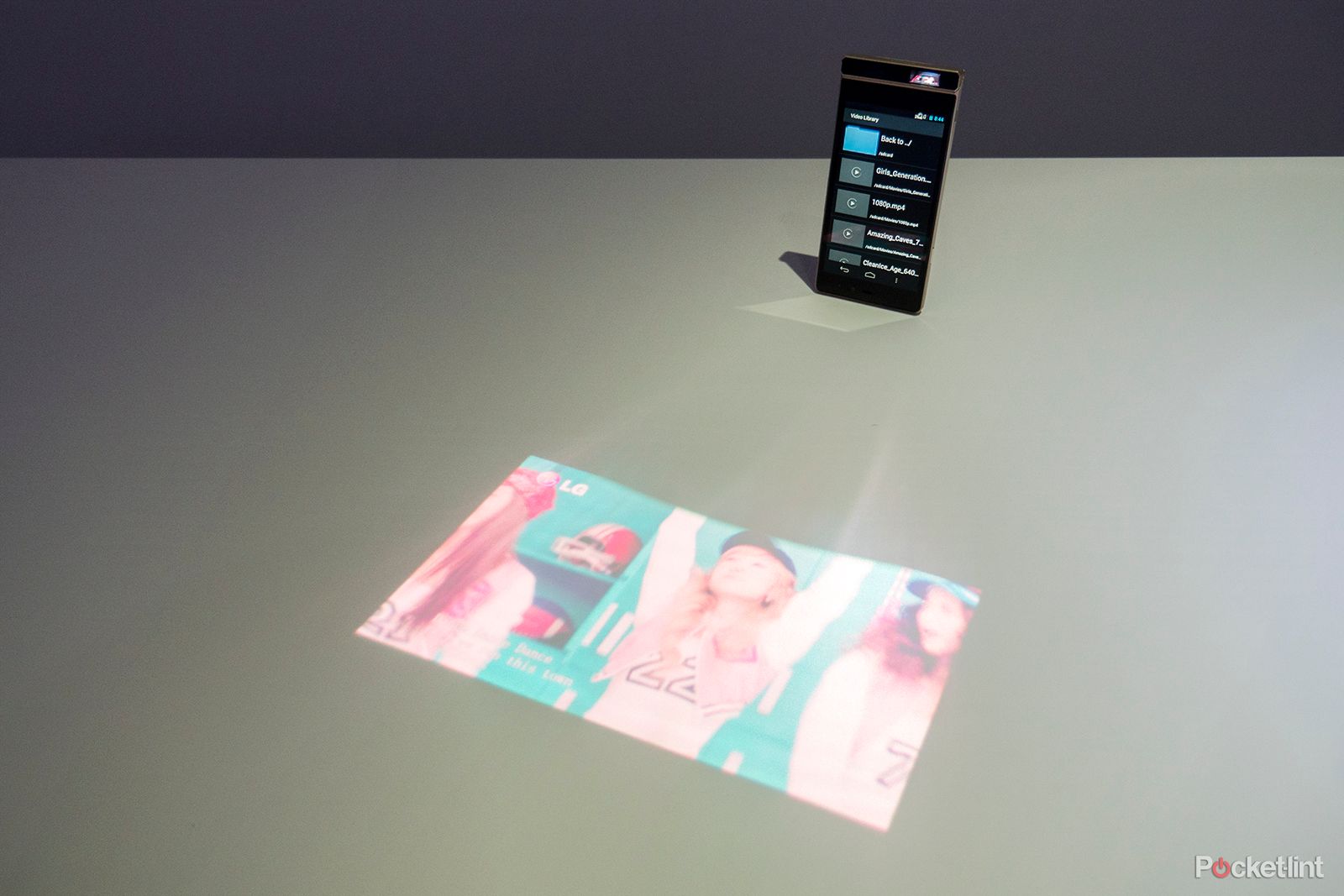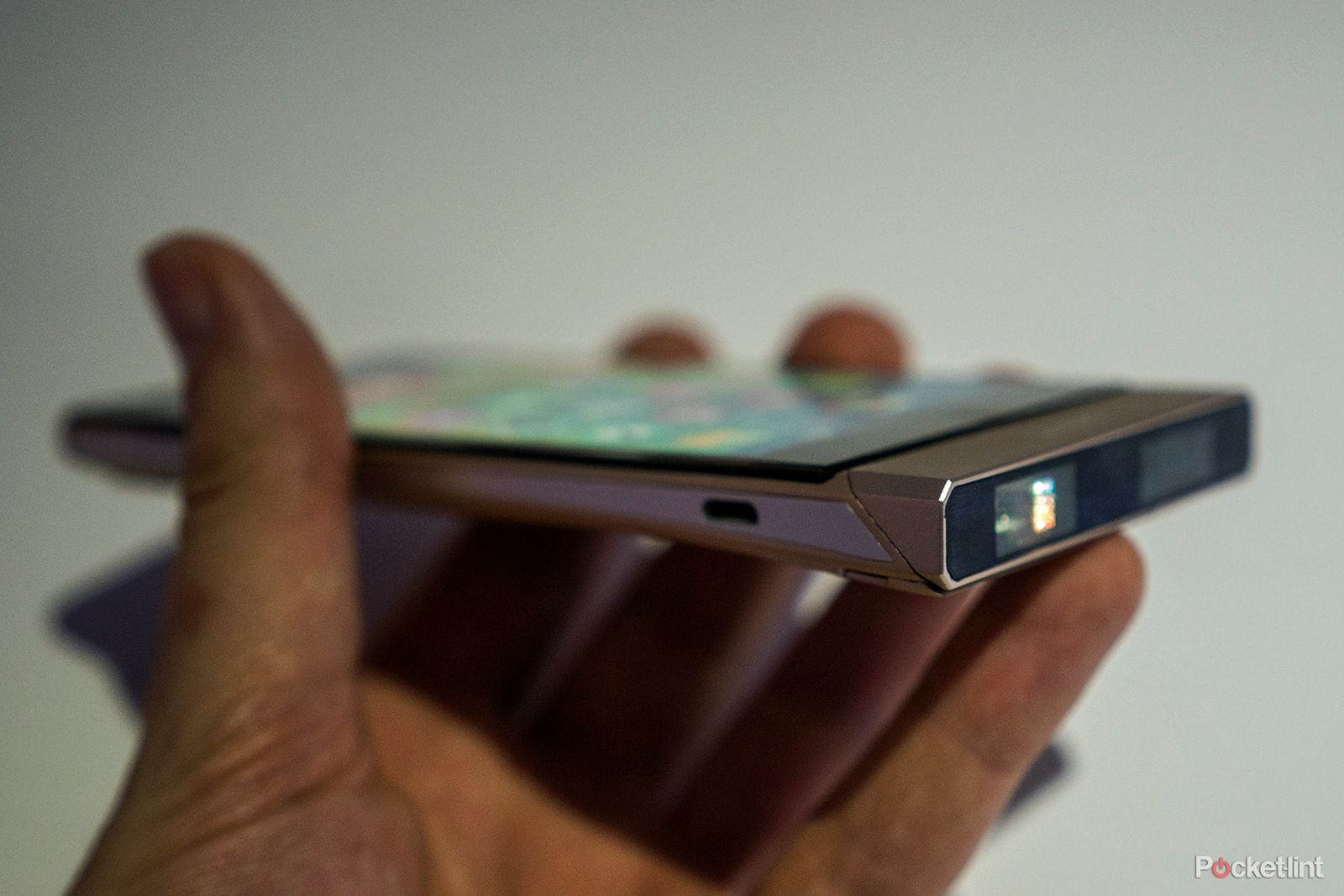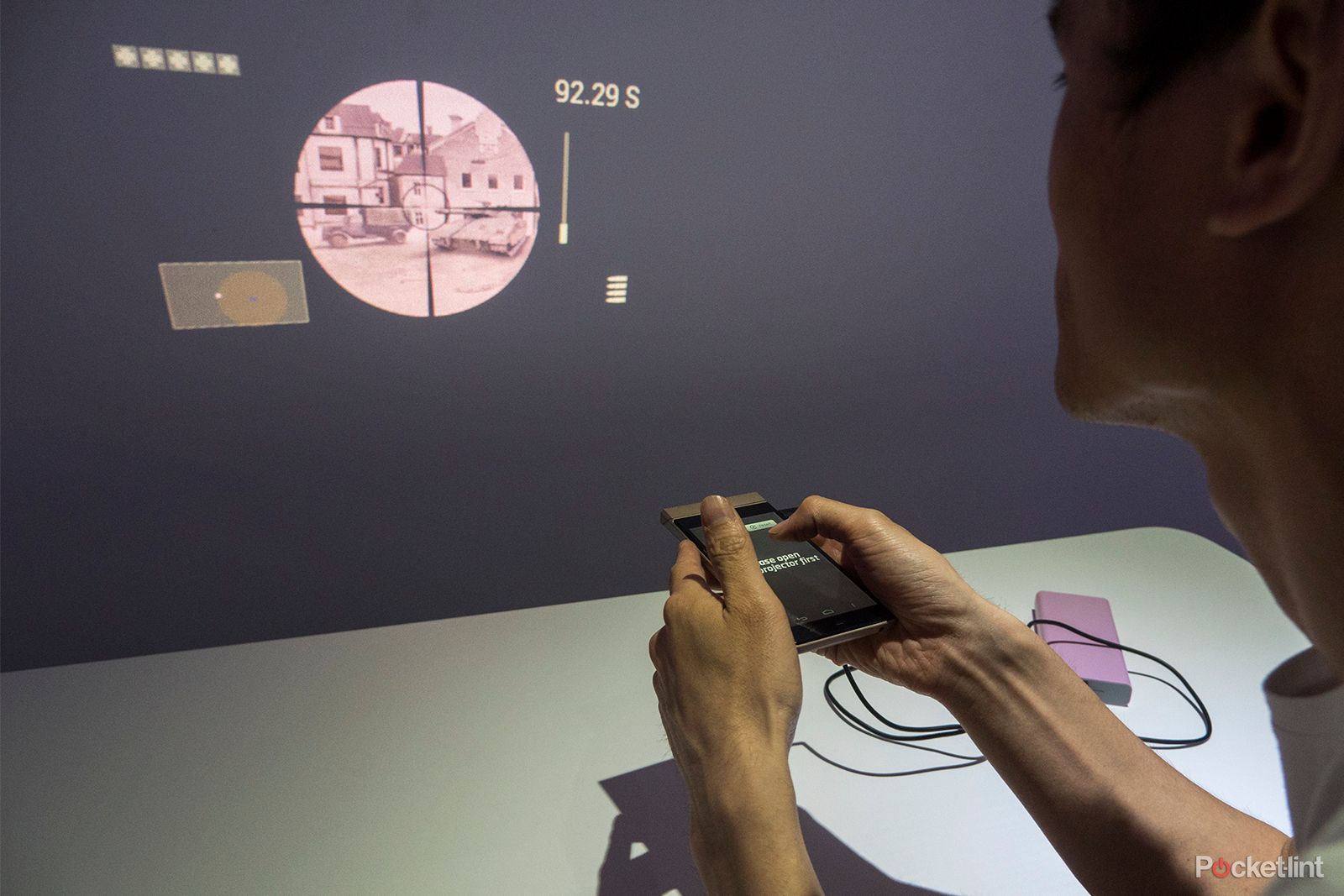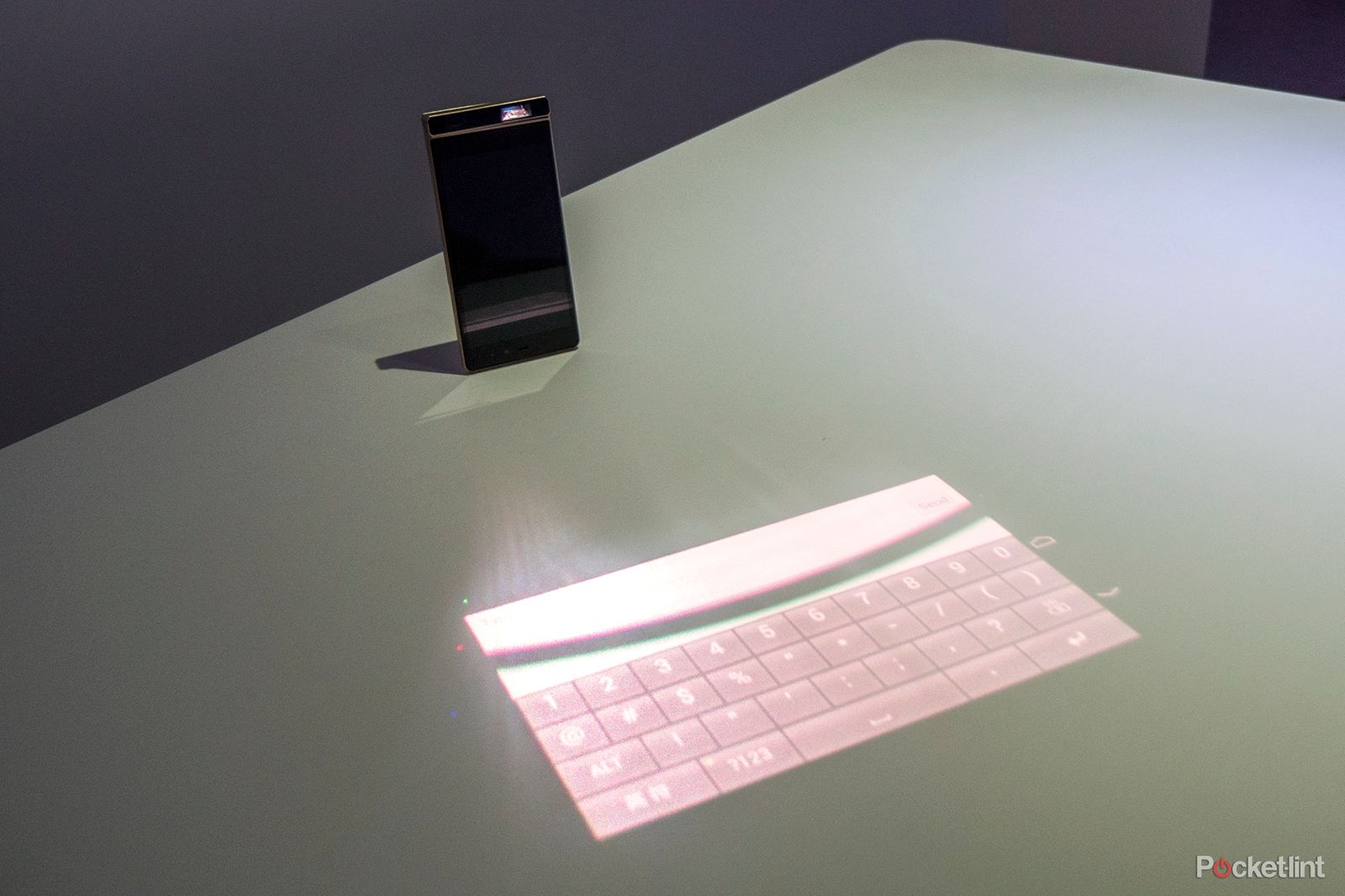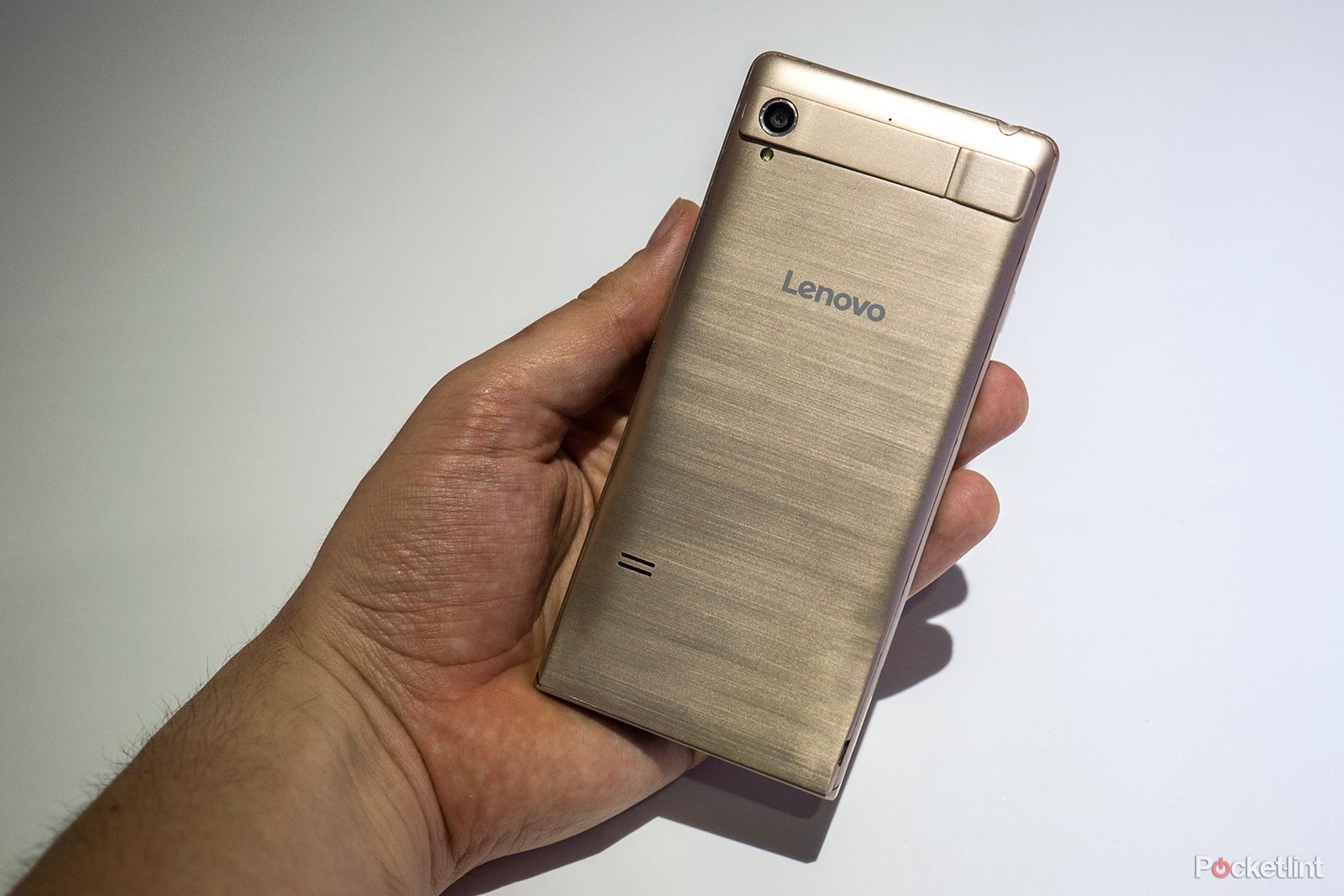We've seen phones with built-in projectors before - remember those, right? - but none quite like the Lenovo Smart Cast.
Lenovo is the first to feature a built-in laser projection keyboard, meaning you can interact with the projection via touch just like a real screen. Or simply use it as a mini tabletop projector.
So is the Smart Cast touching upon the future of tech or is it a mere gimmick? We've been playing with one at Lenovo Tech World, the Chinese company's first product showcase, to get a feel for it.
Front-on the Smart Cast doesn't look particularly unusual: it could well be any normal smartphone found in many peoples' pockets. Until you flip it over and see the stowed kick-stand around the camera lens. The device's thickness tapers to accommodate the projection system too, but thanks to using the world's smallest laser projection module it's not a giant slab of phone by any means.
In this standard form, known as "front mode", the Smart Cast can be handheld and used to project onto a wall. Without some kind of makeshift stand there's no sensible way to mount the projector for a fixed image. But it's in this mode it shows off one of its quirkier features: interactive control.
For example, the Sniper game we played utilised the relative pointed position of the phone's projection to unveil sections of a larger play arena. Where you point the phone the target goes; hit the phone's screen to fire a shot and you'll see enemies in your line of sight - so hold your aim nice and steady - tumble to the ground (in crude three-point animations, admittedly, but it's a simple game designed to show off the feature). That brought a smile to the face, even if we'd be more likely to just play games on a handheld games console instead.
Perhaps the more interesting feature is the "table mode" and its laser projection keyboard. After flipping the mirror module around - it doesn't lock in place and easily rotates 180-degrees around - and pulling out the kick-stand the Smart Cast was ready to roll.
We tried to examples here: typing out a text message on the projection image and opening a piano app to tinkle on those virtual ivories. Now it's fun, no doubt, but less practical than using the phone's screen within relevant applications. Which is the very definition of a gimmick.
However the latency of key presses is pretty good (not perfect, though), but the scale of the keyboard from its default table position is just odd - obviously larger than within a text app, but not near a full-size keyboard. Plus, in the dim-lit room we were testing, we are convinced our shadow interfered with the typing experience which made things trickier.
There's also the obvious question of how well it will handle in brighter conditions. Quite simply we don't know. And we probably never will, as Lenovo phones aren't available in the UK or US.
The spec sheet also seems entirely absent, with no further details of internal hardware, projector brightness, battery life or price and release date, hence focusing this article on the phone's projection-based operation and features.
In summary the Lenovo Smart Cast is an interesting concept, one that's grabbed the headlines and tried to shake-up the smartphone norm. In some ways it's succeeded in that last point, while from a technological point of view its use of the world's smallest laser projection module gives the company added kudos.
But is the interactive projection feature something that everyone will be wanting to use day in, day out? We don't think so. Sure, everyone will want to have a go because it's fun and different, but otherwise the Smart Cast is destined to follow the legacy of other projector phones and vanish into the tech void.

